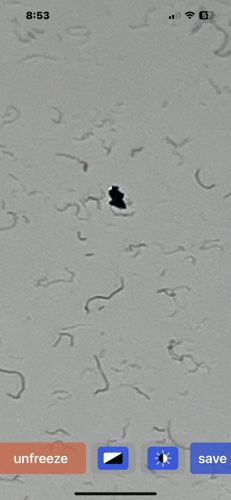Fungus Gnat (Larva)
Scientific Name: Bradysia spp. (likely)
Order & Family: Diptera, Sciaridae
Size: Larvae are typically 4-6 mm long, thin, and worm-like with a distinct black head capsule.

Natural Habitat
Moist soil, especially in potted plants with decaying organic matter, greenhouses, or other damp environments. The image shows them on a surface that appears to be part of their moist habitat.
Diet & Feeding
Fungus gnat larvae primarily feed on fungi, decaying organic matter, and plant roots. They can damage seedlings by feeding on delicate root hairs and tunneling into stems.
Behavior Patterns
Larvae are found in the top inch or two of moist soil. They are legless, white or translucent, and have a shiny black head. They move with a 'snaking' motion. Adults are small, dark, mosquito-like flies that are attracted to moisture and light. Larvae are the damaging stage, while adults are mostly a nuisance.
Risks & Benefits
Risks: Fungus gnat larvae can be a pest in horticulture, especially for seedlings and houseplants, as their feeding can stunt growth or kill young plants. They do not bite humans or animals but can be a significant nuisance when adult populations are high indoors. Benefits: In natural ecosystems, they contribute to the decomposition of organic matter, aiding in nutrient cycling.
Identified on: 9/18/2025